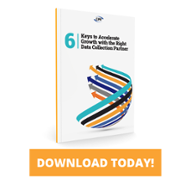
What is CATI Programming in Market Research?
 There are many ways to “do” market research, with nearly as many methods and tools to choose from as there are businesses to use them. It’s one of the reasons why we here at Communications for Research (CFR) truly love our profession. With each research project we undertake, we not only get to use our research skills, we get to be creative, matching the goals of our clients with the best resources for securing the insight they need. Our experience might guide us to pick one methodology over another or prompt us to utilize a combination of many different ones, but it’s always the (unique) situation at hand that dictates our starting point. We’ve highlighted dozens of market research methodologies (such as fieldwork, focus groups, surveys and more) over the years that we’ve maintained our blog in the hopes that we can help shed light on both the strengths and weaknesses of some of the most popular market research techniques. Take a look at one that might not sound as familiar: CATI Programming:
There are many ways to “do” market research, with nearly as many methods and tools to choose from as there are businesses to use them. It’s one of the reasons why we here at Communications for Research (CFR) truly love our profession. With each research project we undertake, we not only get to use our research skills, we get to be creative, matching the goals of our clients with the best resources for securing the insight they need. Our experience might guide us to pick one methodology over another or prompt us to utilize a combination of many different ones, but it’s always the (unique) situation at hand that dictates our starting point. We’ve highlighted dozens of market research methodologies (such as fieldwork, focus groups, surveys and more) over the years that we’ve maintained our blog in the hopes that we can help shed light on both the strengths and weaknesses of some of the most popular market research techniques. Take a look at one that might not sound as familiar: CATI Programming:
What is CATI Programming?
You’re probably familiar with the traditional telephone interview. CATI stands for “computer-assisted telephone interviewing,” and it has taken the place of most modern telephone-based survey methods. With a CATI approach, interviewers still use a telephone to contact research respondents, but instead of the informal banter that a lot of historical phone interviewing utilized, CATI uses trained interviewers to question respondents via a computer-generated script. Each respondent answer is then entered by the interviewer directly into a computerized system using a set of pre-determined codes.
CATI Benefits
When compared to traditional telephone interviewing, CATI Programming has a number of benefits:
- By reading from a computerized script, interviewers are less likely to reword and/or skip questions or influence respondents in some other way. They are still able to clarify responses and answer respondent questions, they just can’t deviate from the script of their own volition.
- Whereas previous telephone interviewing often depended on an interviewer’s subjective interpretation of respondent answers, CATI Programming matches a respondent’s answer to a specific code, which is then entered into a data system in real time. There is no lag between each step of the process (interview, transcription, interpretation and data entry); everything is nearly simultaneous.
- CATI Programming also allows for customization of the interview experience, as scripts can be programmed with conditional parameters based on a respondent’s replies. For instance, if a respondent replies to a question with an answer that coincides with Code Z, then the interviewer would automatically be prompted to ask Question #56 instead of Question #55. This helps keep respondents interested and engaged in the interview process since they aren’t wasting time with topics that aren’t relevant to them or on which they can’t shed any light.
Want to Learn More?
Many options exist for companies wanting to conduct quality market research. If you need insights to better your business practices, increase sales and improve your ROI, contact our team at Communications for Research (CFR). We have over twenty years experience listening to the needs of our clients and picking the best research technique(s) for garnering meaningful and actionable results.
You might also like to download our free eBook, “6 Keys to Accelerate Growth with the Right Field Data Collection Partner,” to learn more about the value of quality data collection.



